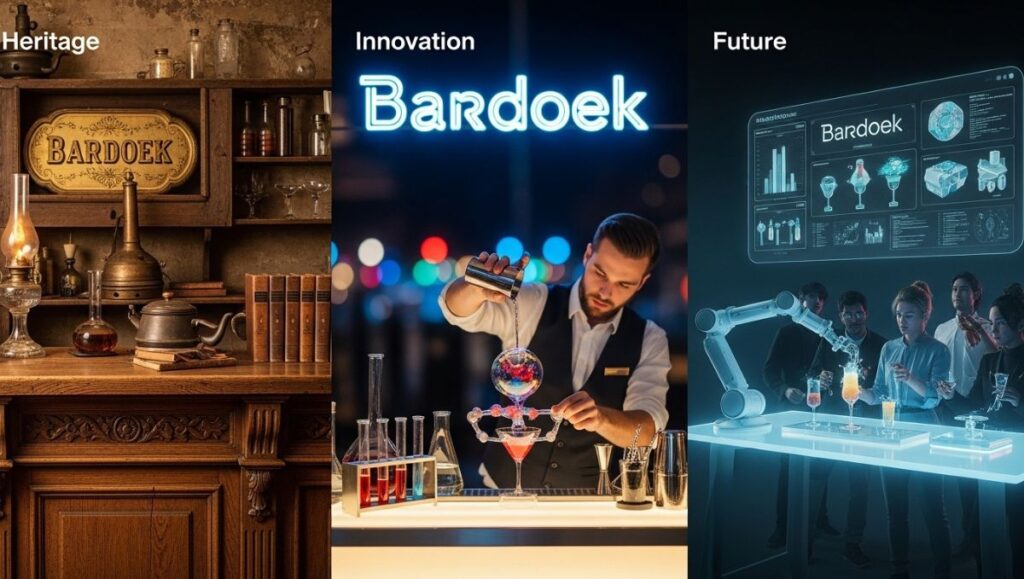Bardoek is a word that has begun to surface in discussions about culture, design, technology, and sustainability. Though still emerging, the concept represents a rich fusion of tradition and innovation, blending artisanal roots with contemporary ideas and ethical frameworks. Whether viewed as a cultural craft style or as a sustainability-focused design philosophy, Bardoek stands out for its depth, adaptability, and symbolic power.
Understanding Bardoek
At its core, Bardoek can be understood as a multidimensional idea that spans several domains:
-
A cultural and artistic heritage, often associated with traditional pattern-making, textile work, and symbolic craftsmanship.
-
An ethical, future-ready framework used in discussions of sustainable design, technology development, and human-centered innovation.
-
A lesser-known botanical or wellness concept, described in some contexts as an herb or natural remedy (though this is less widely documented).
While the botanical meaning remains speculative, the two primary interpretations—heritage craft and sustainable innovation—are the most influential. Together, they form a unique identity: Bardoek as a bridge between culture and the modern world.
Origins and Evolution of Bardoek
Traditional Foundations
In cultural and artistic contexts, Bardoek is described as a traditional craft aesthetic, originating from regions where intricate textile design and hand-made patterns are deeply rooted in local heritage. Patterns associated with Bardoek often feature:
-
Bold geometric shapes
-
Layered textures
-
Symbolic motifs
-
Natural dyes and artisan craftsmanship
These elements reflect not only artistry but cultural storytelling—each pattern representing values, beliefs, or historical narratives. Traditional craftspeople used these motifs to communicate identity, community belonging, and even spiritual meaning.
Modern Reinterpretation
In the last decade, Bardoek has evolved from a purely artisanal reference to a broader design and sustainability concept. Some modern thinkers use Bardoek as a metaphorical framework to describe:
-
Ethical technology development
-
Human-centered design principles
-
Ecological governance
-
Sustainable innovation
In this modern sense, Bardoek describes a future-ready design lens—a perspective emphasizing responsibility, inclusivity, and adaptability. It represents systems that not only function efficiently but also align with ethical and environmental values.
Key Characteristics of Bardoek
No matter the domain—craft, design, or technology—Bardoek tends to express the same foundational principles:
1. Harmony Between Tradition and Innovation
Bardoek celebrates the idea that modern systems or designs can grow from traditional wisdom. In craft, this means reimagining heritage patterns through contemporary fashion or interior design. In technology, it means building systems that balance innovation with cultural and ethical awareness.
2. Deep Cultural Symbolism
Bardoek’s artistic patterns are rarely decorative alone. They often hold meaning—representing community history, moral lessons, or natural elements. This symbolism forms a cultural identity, making Bardoek designs emotionally resonant and spiritually meaningful.
3. Human-Centered and Community-Focused
Bardoek gives importance to real human experiences:
-
Craft: honoring artisans, their stories, and their communities
-
Tech: designing systems that prioritize user well-being and societal impact
This human-centeredness ensures that the concept remains grounded.
4. Sustainability and Responsibility
Modern Bardoek reflects environmental responsibility:
-
Low-impact materials
-
Ethical sourcing
-
Transparent systems
-
Regenerative design principles
It aligns with global demand for more sustainable products and practices.
5. Adaptability Across Disciplines
Bardoek’s adaptability has made it relevant in multiple fields. In craft, it appears as textiles, garments, or home décor. In technology, it emerges as a strategic framework for ethical innovation. Its ability to cross industries is part of its strength.
Applications of Bardoek
1. Craft, Fashion, and Design
One of the most popular expressions of Bardoek is in creative industries:
Fashion
Designers use Bardoek-inspired patterns in clothing lines, combining traditional motifs with modern silhouettes. This allows brands to produce garments that feel both contemporary and culturally meaningful.
Interior Design
Bardoek appears in:
-
Textured fabrics
-
Statement wallpapers
-
Decorative panels
-
Hand-woven rugs
These elements bring warmth, storytelling, and cultural richness into interior spaces.
Architecture
Some architects incorporate Bardoek motifs into building façades, structural patterns, or interior surfaces, merging heritage aesthetics with modern construction.
2. Technology and Sustainability Frameworks
In the context of ethical innovation, Bar-doek has emerged as a metaphorical framework applied to:
-
Smart city development
-
Sustainable digital infrastructure
-
Ethical artificial intelligence
-
Transparent supply chains
-
Eco-friendly technology solutions
Bar-doek encourages systems that are:
-
Accountable
-
Inclusive
-
Environmentally aware
-
Built with long-term impact in mind
This perspective is vital as modern technologies reshape societies.
3. Business and Brand Strategy
Brands use Bar-doek principles to:
-
Develop eco-friendly or culturally rooted products
-
Build a narrative around authenticity and heritage
-
Improve consumer trust through transparency and ethics
-
Strengthen brand identity through meaningful symbolism
This is especially relevant in global markets where consumers increasingly value sustainability and ethical production.
4. Wellness (Speculative Interpretation)
In some discussions, Bardoek is mentioned as an herbal element used in traditional remedies. While this meaning is less established, it shows how the term’s cultural associations extend into wellness and natural medicine.
Why Bardoek Matters Today
Preserving Cultural Identity
Bardoek helps keep traditional crafts alive in a rapidly digitalizing world. It offers artisans pathways to reach modern markets and preserve their heritage.
Responding to Sustainable Demands
Consumers today prefer products and systems that are environmentally responsible. Bardoek’s principles directly align with these values.
Guiding Ethical Innovation
The modern world is racing ahead with AI, automation, and digital transformation. Bar-doek provides a framework to ensure that innovation remains ethical, inclusive, and human-centered.
Encouraging Interdisciplinary Thinking
By bridging craft, culture, technology, and sustainability, Bar-doek helps industries think more holistically—an essential skill for solving modern challenges.
Challenges and Considerations
Although Bar-doek holds promise, certain risks exist:
1. Cultural Misinterpretation
Using Bardoek patterns or ideas without understanding their cultural significance can lead to misuse or appropriation.
2. Superficial Adoption
There is a danger that companies adopt the “look” of Bar-doek without adopting its deeper values—turning it into a trend rather than a meaningful practice.
3. Lack of Standardization
In technology, Bar-doek is not yet a formal framework, so organizations must interpret and implement it themselves, which can lead to inconsistencies.
4. Resource Limitations
Responsible craft and sustainable technology often require time, training, and investment, which can challenge smaller groups or communities.
The Future of Bardoek
1. Cultural Revival
As interest in artisanal methods grows, Bardoek crafts may gain more global recognition. Fashion designers and interior creators will likely incorporate it more widely.
2. Eco-Technological Integration
In sustainability and tech fields, Bardoek may become a guiding philosophy for new systems—those prioritizing ethical governance, transparency, and environmental balance.
3. Cross-Industry Collaborations
Expect collaborations between:
-
Artisans and tech firms
-
Designers and sustainability experts
-
Cultural institutions and modern architects
Bardoek may become a shared language connecting diverse sectors.
4. Global Influence
As the world pushes for ethical production and culturally meaningful design, Bardoek has the potential to become a globally acknowledged symbol of balanced progress—where innovation respects heritage and sustainability.
Conclusion
Bardoek is much more than a pattern, a craft, or a framework—it is an evolving idea that reflects humanity’s desire to honor the past while shaping a better future. It expresses the beauty of heritage crafts, the intelligence of ethical design, and the responsibility demanded by modern technology.
Whether you are an artist, designer, technologist, business owner, or curious reader, Bardoek invites you to think differently:
-
Create with intention
-
Innovate with responsibility
-
Preserve culture while shaping progress
If you want, I can also create a shorter version, a product description, or an SEO-optimized summary for Bardoek.






